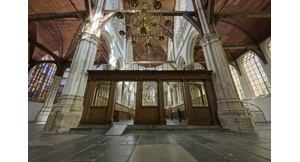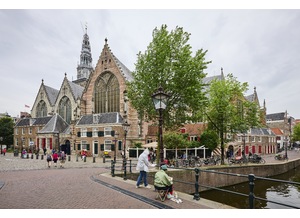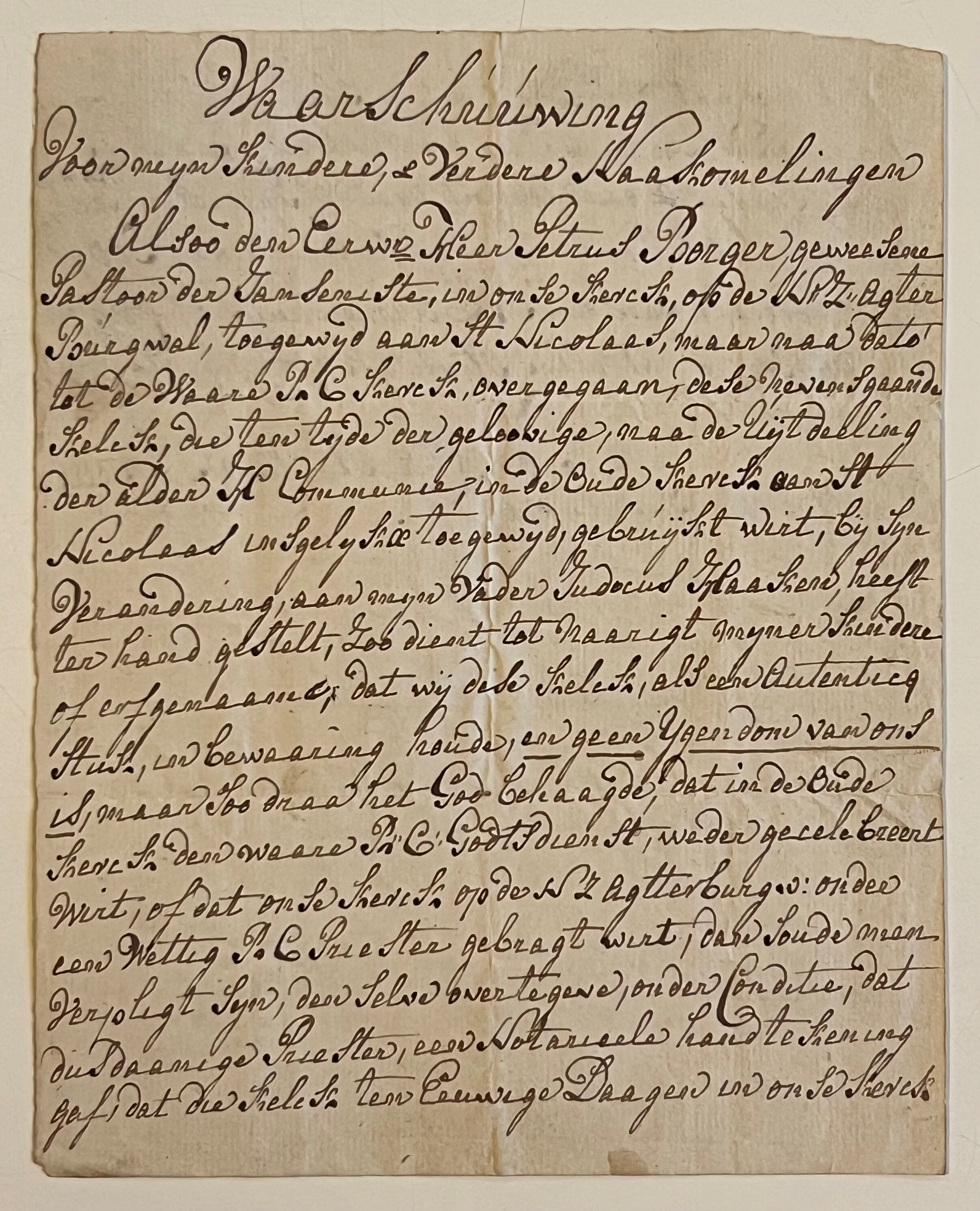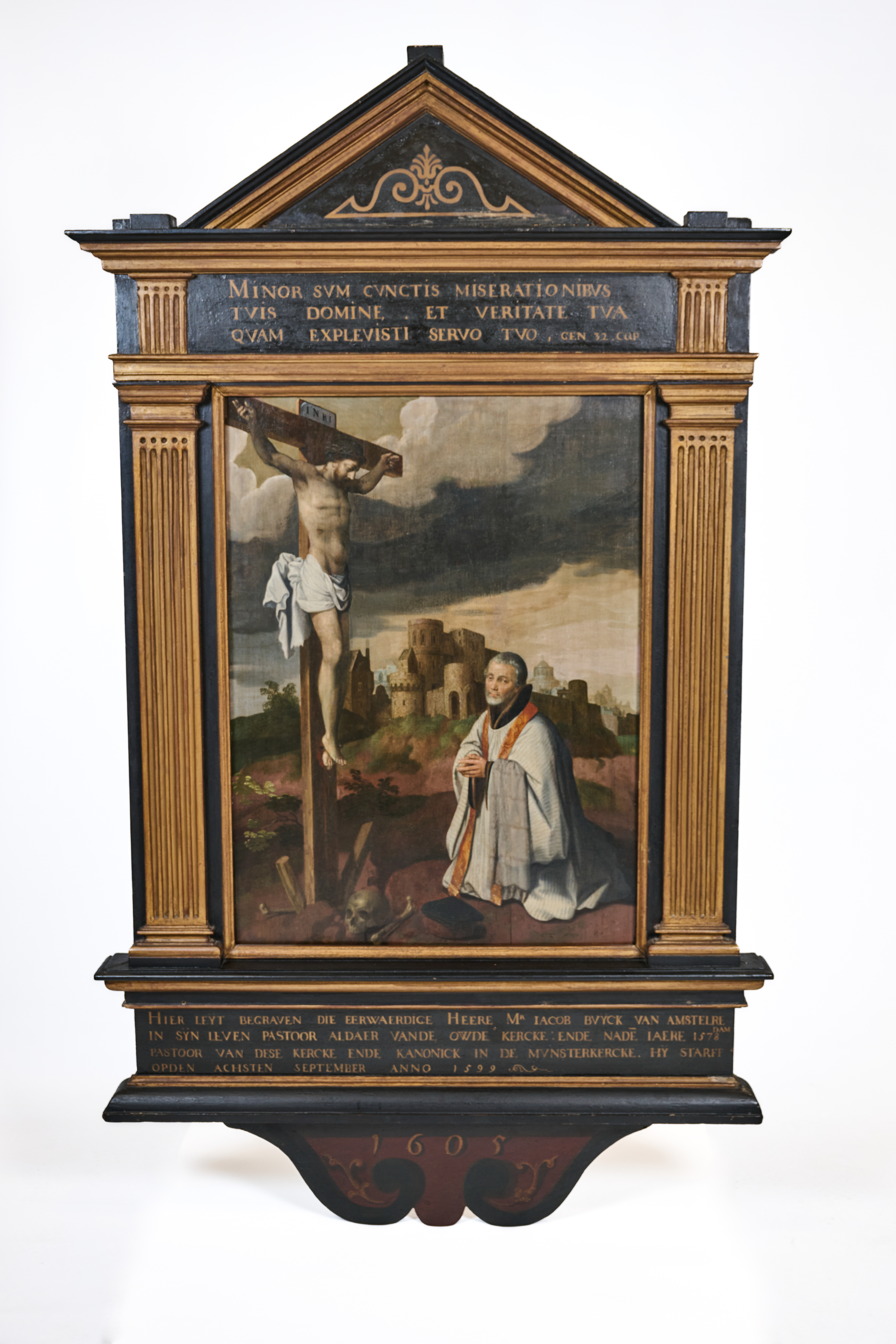This small glass chalice is one of the few surviving objects from the Catholic period of the Oude Kerk.
Location
Oude Kerk
Oudezijds Achterburgwal
Type
Church
Religious community
Formely Roman Catholic Church
Object
Glass chalice with silver base, used to rinse the mouth after receiving Holy Communion
Maker and date
Maker unknown
1550-1575
Visit
Not on display
A Chalice for Ordinary Wine
If the surviving documentation is correct, this glass ablution chalice with silver base is one of the most remarkable collection pieces of the Our Lord in the Attic Museum. The chalice reminds us of a custom which is no longer performed in the Catholic liturgy. In the 16th century, it was common for Catholic faithful, after receiving communion, to receive unconsecrated wine in such a chalice to rinse their mouths. This mouthwashing is called ablution.
Liturgy
Refers generally to the prescribed rites of formal and public worship, typically including words, music, symbolic aids, and ritual actions.
A Unique Eyewitness
This chalice is a unique ‘eyewitness’ to the Alteratie of Amsterdam. Its life story is known thanks to three short documents that have survived together with the chalice. The oldest document is a short note that reveals its high-grade origin: ‘This glass was used in Catholic times to give ablution in the Oude Kerk in Amsterdam‘. In the third note, the writer orders his descendants to return the chalice ‘[w]hen it pleases God that in the Oude Kerk the true Roman Catholic Religion is once again celebrated.‘ It is extraordinary that this liturgical object has been preserved. Most Catholic objects from the period before the Alteratie were melted down, destroyed or otherwise lost after the Protestant takeover of the city.
After the Alteratie of Amsterdam, the last pastor of the Oude Kerk went into exile. He found refuge in the St. Aldegondis church in the German town of Emmerich and became canon of the Münster church. This epitaph was placed in the church after his death in 1599.
Alteratie
In 1578, the Catholic city government of Amsterdam was deposed. A Protestant city council took its place. The consequence of this change (Alteratie in Dutch) was that, from that moment on, the Reformed Church became the only church that was allowed to manifest itself publicly. Catholic churches and monasteries were confiscated and given new functions.
Pastor
(Latin for shepherd) is the priest, to whom the leadership of a parish (church) is entrusted by the bishop.
Epitaph
Painting to which a text has been added as a reminder of the depicted person or persons.
Canon
One of the members of a chapter. A chapter is a community of clerics attached to a cathedral or chapter church. Their main task is the dignified and public celebration of the Church's liturgy.
Pieter-Jan van Giersbergen
Curator Our Lord in the Attic Museum
Last edited
October 24, 2024
Glass ablution chalice with silver base, unknown maker, third quarter of 16th century, h. 13 cm x d. 8.5 cm. Collection Our Lord in the Attic Museum.
Epitaph of Jacob Buyck, unknown maker, Westphalian, oil on panel, 1605, 80 cm x 66 cm. Collection Our Lord in the Attic Museum.
Rooij, F.W. de, 'Drie merkwaardige bescheiden betreffende een Ablutiekelk uit de oude S. Nicolaas te Amsterdam' in: C.J., Gonnet, J.J. Graaf, A.H.L. Hensen, J.C. van der Loos, E.H. Rijkenberg en L. Stolk eds., Bijdragen voor de geschiedenis van het Bisdom van Haarlem, 38 (Utrecht 1918) 102 - 107.









